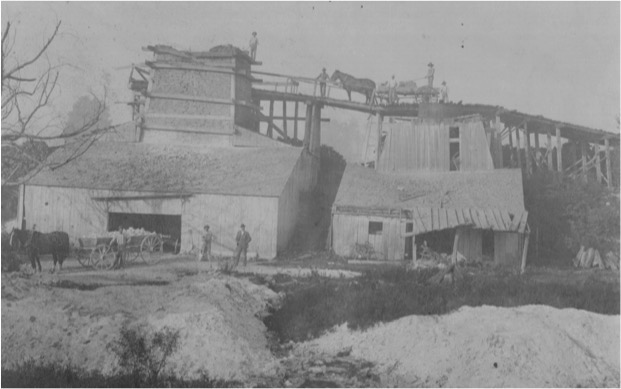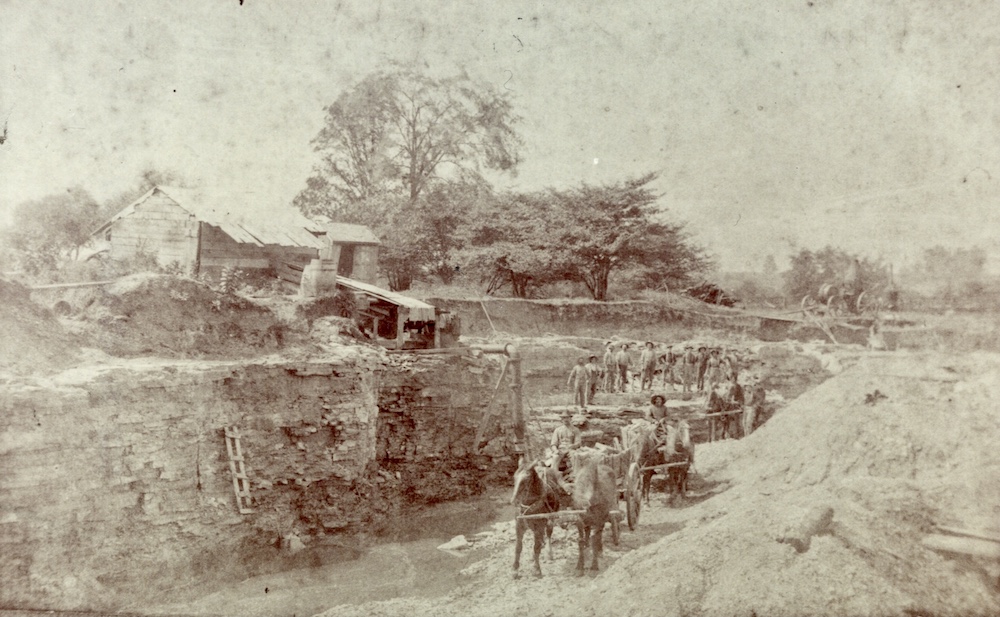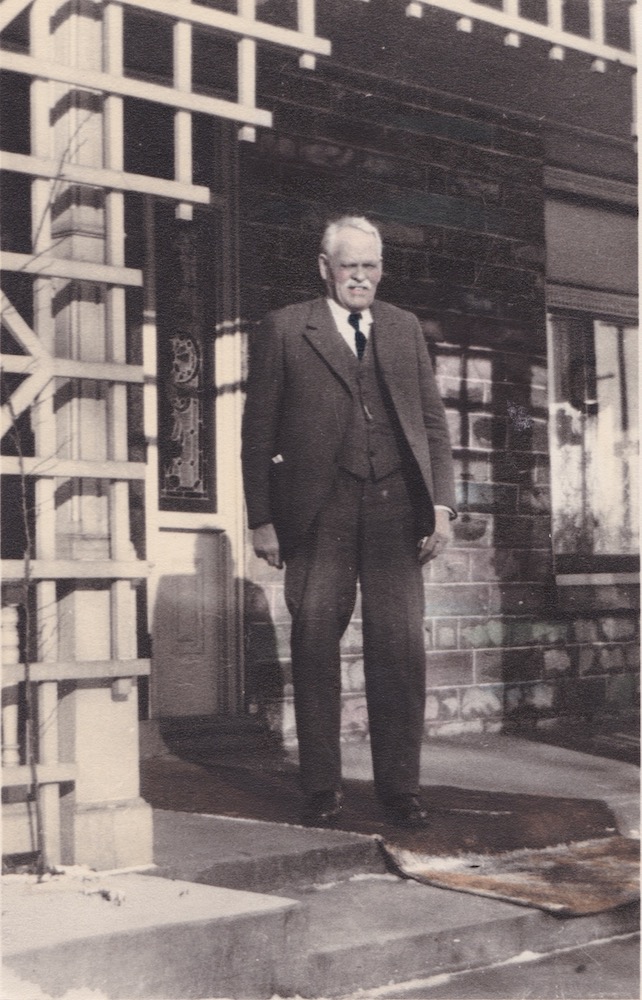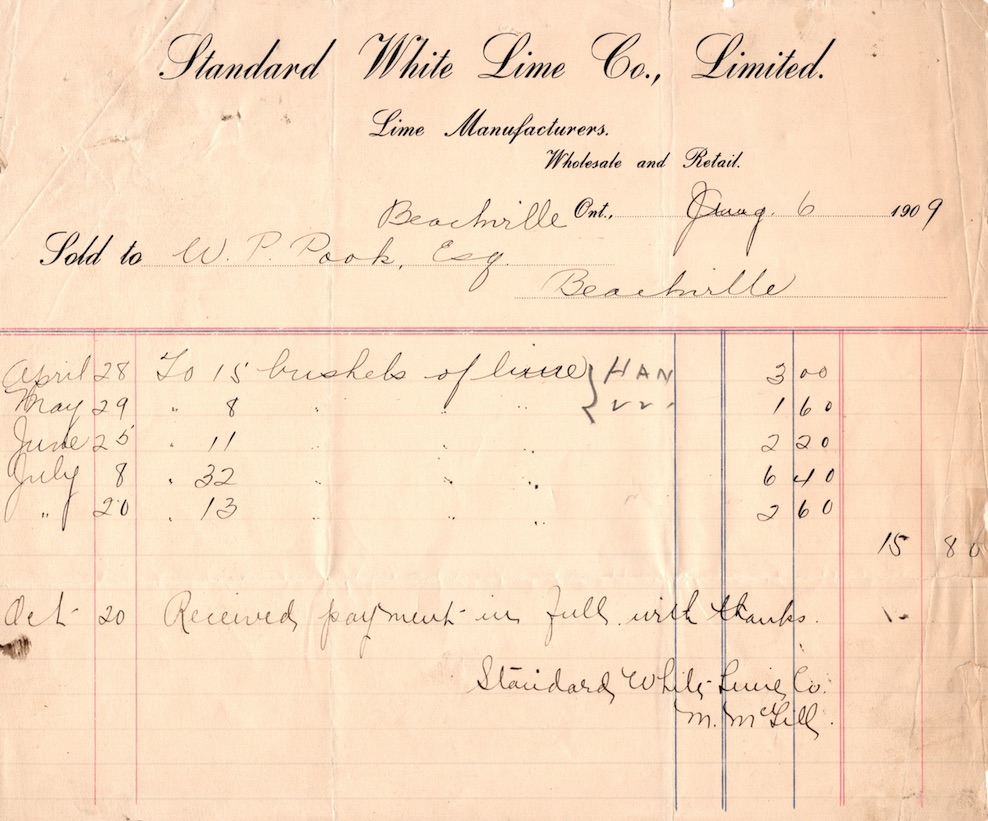The Second Generation: A Downing-Bremner Partnership and the Formation of Standard White Lime
The second generation of quarrymen faced more competition than the first. Thomas Downing Sr. had gained “widespread and well-deserved popularity” as “the oldest manufacturer of lime in his locality.” Just as he retired, the 1880s brought a rush to participate in the limestone industry. While the 1871 census mentioned 3 lime burners, the 1881 census listed 10 burners. New operations popped up on either side of the village; some flourished, and others flopped.
John Hacker and Samuel Cole formed their company, Cole & Hacker, in 1884 or 1885. They purchased Lot 22 from Thomas Downing Sr. before he retired and offered competition to the operations in the west until Cole died in 1904, and the company closed.
Another enthusiastic joiner, Sandford Canfield, bought property north of the river at Lots 19 and 20. He focused on mining limestone for building projects around the village but was bankrupt by 1886.
John Downing’s operation expanded thanks to a strong, informal partnership between Alexander Bremner and John Henry. Bremner purchased portions of land from Thomas Downing Sr. at West Oxford, Broken Front, Lot 11. He and John shared equipment and facilities. They supervised each other’s sites whenever there was a need. A formal partnership was never struck, but their sites became known as the Downing-Bremner quarries.
Arthur Lightheart worked at the Downing-Bremner quarries as a young man. In the audio clip below, he recounts an accident on the ramp to the kilns.

Listen to the audio clip with the transcript: Arthur Lightheart Recalls a Loose Load of Limestone.
Where the end of the 19th century proved troublesome for operations east of Beachville, the new century brought fresh opportunities for those in the west. The Downing-Bremner quarries were sold in 1903 to buyers – George Kennedy, D.D. Christie and a Mr. Henderson – from Guelph; Consequently, Standard White Lime formed. John Downing retained the property at Lot 17 and acted as a consultant to the new company. His sons, Charlie and Fred, worked at the quarries on holidays and after school and continued the legacy their grandfather started.
By 1904, it was reported that at least 25 men were employed at the Beachville quarry.




